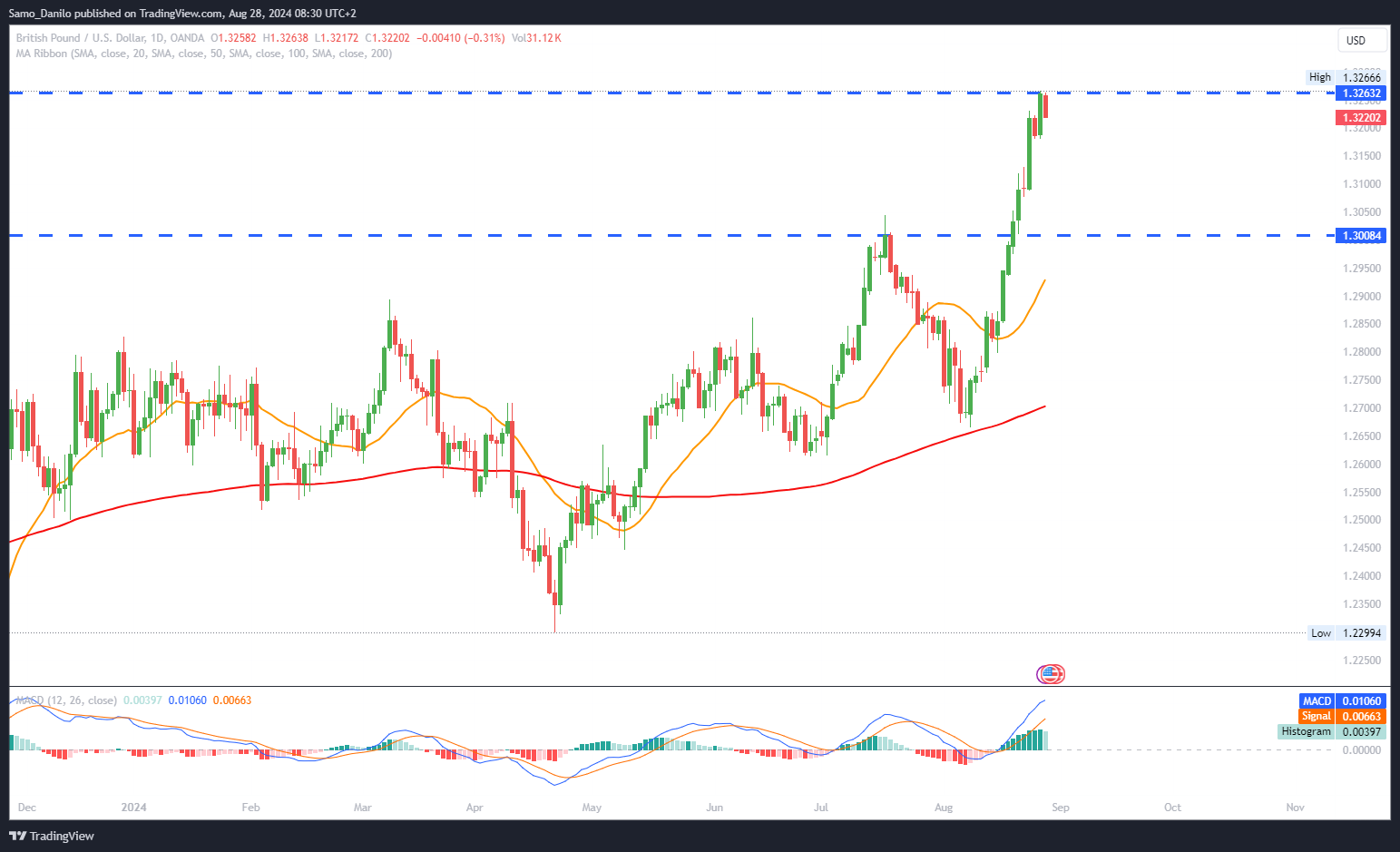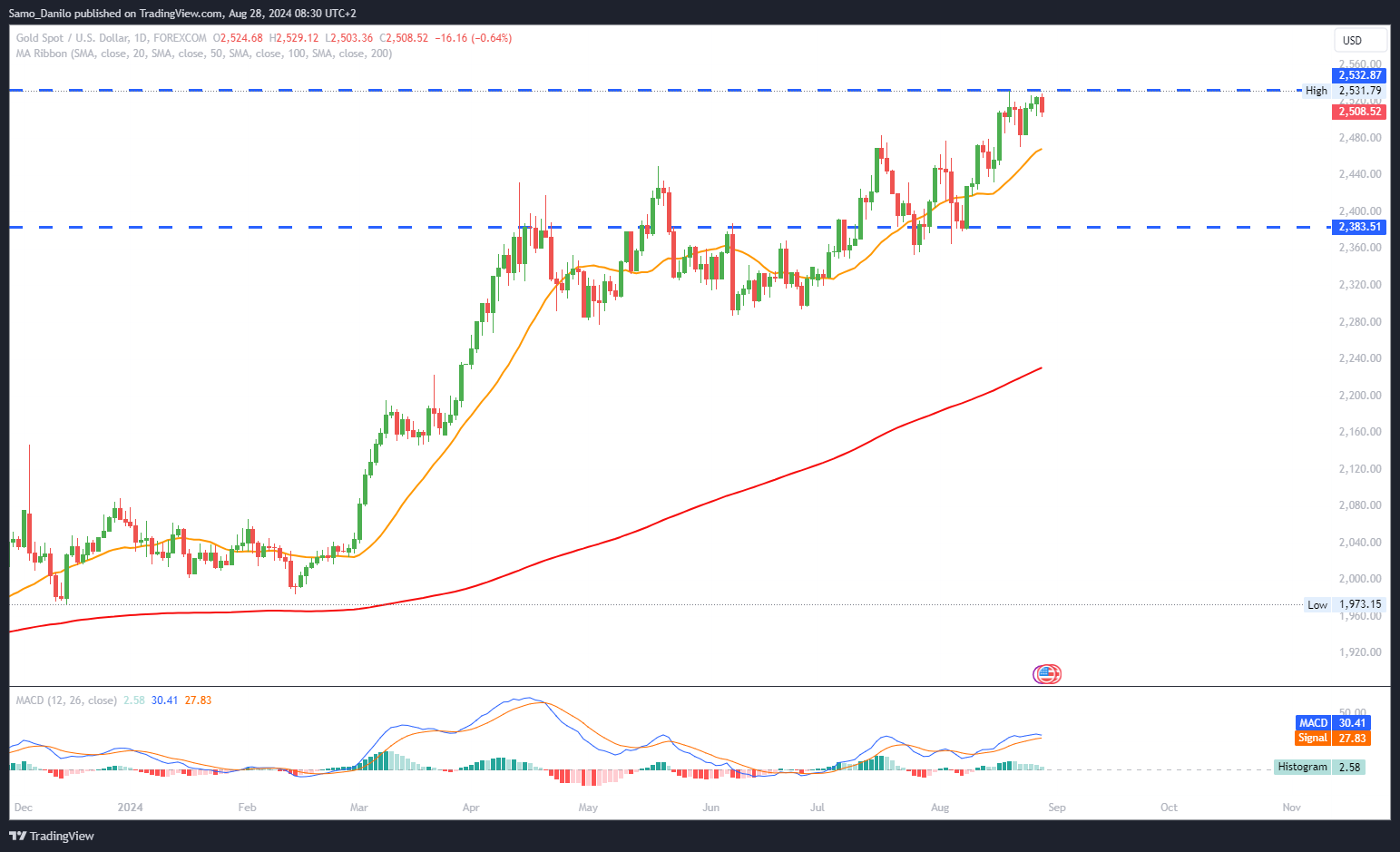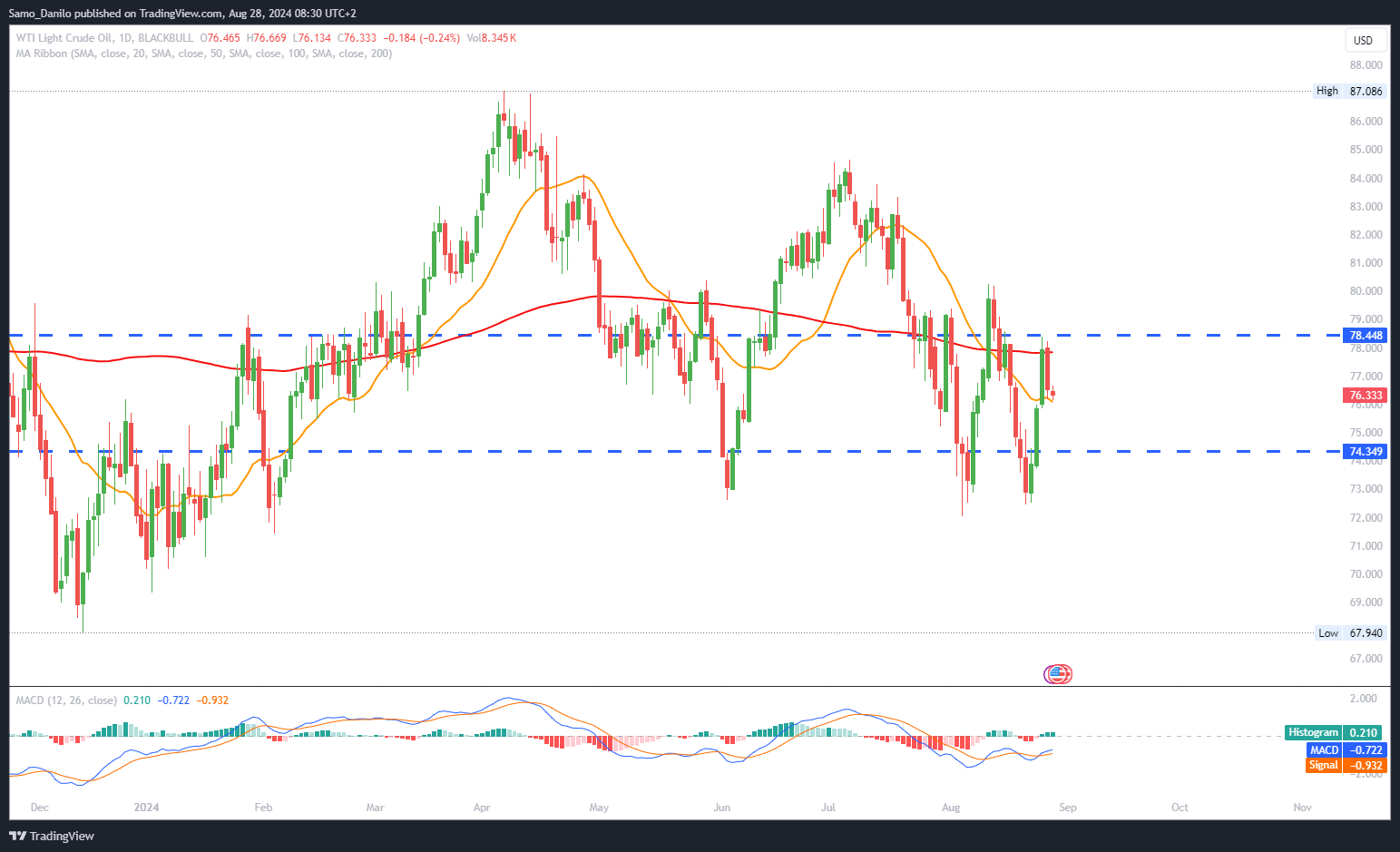EURUSD
- Current Market Sentiment: EUR/USD is under pressure, trading below 1.1150 in early European trading on Wednesday. The pair continues to correct from yearly highs, as renewed demand for the US Dollar weighs on the Euro.
- Fed Rate-Cut Signals: At the Jackson Hole Economic Symposium last Friday, Fed Chair Jerome Powell strongly hinted that the Federal Reserve is likely to pivot toward a rate-cutting cycle starting on September 18. This expectation has driven market appetite for the US Dollar higher, contributing to the EUR/USD pair's decline.
- US Housing Data Impact: Mixed results from US housing data provided limited support for the Euro. The Federal Housing Finance Agency’s (FHFA) MoM Housing Price Index for June contracted by -0.1%, down from May’s flat reading, adding to the uncertainty around the US economic outlook.
- Upcoming Fedspeak and Eurogroup Meeting: Traders will closely watch for comments from Fed Board of Governors member Christopher Waller during the US session. Additionally, any significant developments from the Eurogroup meeting in Europe could influence the pair's direction.
- Key Economic Data Ahead: The Pan-European Harmonized Index of Consumer Prices (HICP) inflation numbers for August, due early on Friday, will be a critical focus. Expectations are for a slight decrease in inflation across the Eurozone, with the YoY figure projected to tick down to 2.8%. This data could provide further clues on the European Central Bank's (ECB) next policy moves.
Closing statement: The EUR/USD pair appears vulnerable to further downside pressure as the US Dollar strengthens on expectations of imminent Fed rate cuts. However, upcoming Eurozone inflation data and central bank communications could offer short-term support if they surprise to the upside. For now, the pair may continue to trade with a bearish bias, testing lower levels if the Dollar remains in demand.
GBPUSD
- Current Market Sentiment: GBP/USD is experiencing a pullback towards the 1.3200 level in early European trading on Wednesday, pressured by a renewed rise in US Dollar strength.
- Recent Performance: The pair has demonstrated remarkable resilience, closing in positive territory in all but two of the last 14 trading sessions. However, with technical resistance levels thinning, the pair is now facing challenges to maintain its upward momentum.
- BoE Focus: Market participants will closely monitor an upcoming speech from Bank of England (BoE) policymaker Catherine Mann, scheduled after the London market close. Her remarks could offer insights into the BoE's future policy direction, potentially impacting the GBP/USD pair.
- US GDP: On the US side, attention is turning to key economic data releases. The second-quarter US Gross Domestic Product (GDP) figures, due on Thursday, are expected to remain steady at an annualized rate of 2.8%.
- Inflation Data: However, the most crucial data point will be the US Personal Consumption Expenditure (PCE) Price Index for July, set to be released on Friday. Markets anticipate a slight increase in the YoY figure to 2.7% from 2.6%, with the MoM reading expected to remain flat at 0.2%.
| SMA (20) | Rising |
|
|
| RSI (14) | Rising |
|
|
| MACD (12, 26, 9) | Rising |
|
|
Closing statement: The GBP/USD pair is likely to remain under pressure as the US Dollar benefits from strong economic expectations and potential hawkish signals from the Fed. However, if BoE policymaker Catherine Mann delivers unexpectedly hawkish comments, or if the upcoming US data disappoints, the pair could find support and bounce from the 1.3200 level. For now, the path of least resistance appears to be on the downside, with traders cautious ahead of the key US economic data later in the week.
GOLD
- Current Market Sentiment: The gold price slipped back into negative territory early Wednesday but continues to trade within a familiar range above $2,500.
- US Dollar Influence: The US Dollar failed to capitalize on positive US Conference Board (CB) Consumer Confidence data and was also unmoved by a sell-off in US and Chinese tech equities. This lack of momentum in the USD has helped limit the downside for gold.
- Geopolitical Tensions: Geopolitical tensions in the Middle East continue to provide underlying support for gold as a safe-haven asset. White House spokesman John Kirby indicated on Tuesday that the US believes Iran is positioned to launch an attack on Israel, maintaining a bid for the yellow metal.
- Fed Policy Expectations: Despite the ongoing bullish sentiment around gold, upcoming Fedspeak will be critical in determining the next directional move for the precious metal.
- FedWatch Tool: According to the CME Group’s FedWatch Tool, markets are currently pricing in a 32% probability of a 50 basis points (bps) rate cut in September, while the odds of a 25-bps cut are at 68%.
| SMA (20) | Rising |
|
|
| RSI (14) | Rising |
|
|
| MACD (12, 26, 9) | Rising |
|
|
Closing statement: Gold's price movement will likely remain within its current range as traders await further clarity from Fed officials. The metal may see renewed upward momentum if geopolitical tensions escalate or if upcoming Fed commentary reinforces expectations of a rate cut. However, any hawkish surprises from the Fed could weigh on gold prices, potentially pushing them lower. For now, the metal's support from safe-haven demand amid geopolitical concerns keeps the outlook cautiously bullish.
CRUDE OIL
- Current Price: West Texas Intermediate (WTI), the US crude oil benchmark, is trading around $75.60 on Wednesday.
- US Economic Indicators: The latest data from the Conference Board showed an improvement in US Consumer Confidence, which rose to 103.3 in August from a revised 101.9 in July. This data suggests a potential uptick in consumer spending, which could support oil demand in the US.
- China's Economic Concerns: Persistent fears regarding China's economic health and future oil demand continue to weigh on WTI prices. As the world's largest oil importer, any slowdown in China's economy could significantly impact global oil demand, applying downward pressure on crude prices.
- US Crude Inventories: According to the American Petroleum Institute (API), US crude oil stockpiles decreased by 3.4 million barrels for the week ending August 23. This decline in inventories typically signals stronger demand or reduced supply, which can help support higher oil prices.
- Geopolitical Factors: The potential for a shutdown in Libya's oil production amid ongoing geopolitical tensions in the Middle East provides a floor for WTI prices. Libya, which produces about 1.2 million barrels per day, plays a significant role in the global oil supply, and any disruption could limit the downside for WTI.
| SMA (20) | Falling |
|
|
| RSI (14) | Slightly Rising |
| |
| MACD (12, 26, 9) | Slightly Falling |
|
Closing statement: WTI prices are currently supported by improving US consumer confidence and declining US crude inventories, alongside the threat of supply disruptions from Libya. However, the potential for a slowdown in China's economy remains a key downside risk. If geopolitical tensions escalate further, particularly in the Middle East, WTI could see renewed upward momentum. For now, the outlook is cautiously bullish, with the potential for volatility depending on developments in China and global geopolitical events.
DAX
- Market Movers: Continental led the DAX on Wednesday, rallying 2.74%, with Adidas following closely behind, advancing by 2.19%. The risk-on sentiment in the market also bolstered tech stocks, with Infineon Technologies gaining 0.78% and SAP up by 0.55%.
- German Consumer Sentiment: The German GfK Consumer Climate Index for September unexpectedly dropped to -22.0 from -18.6 in August. This decline indicates worsening consumer sentiment and suggests a more cautious outlook for household spending in Germany, potentially weighing on economic recovery.
- German Economic Data: The German economy contracted by 0.1% in Q2 2024, following a 0.2% expansion in Q1 2024. This contraction confirms the flash report from July 30 and raises concerns about the ongoing health of the German economy, particularly as the country struggles with high inflation and slowing industrial output.
- US Economic Indicators: Across the Atlantic, the CB Consumer Confidence Index rose to 103.3 in August from 101.9 in July, alleviating some fears of a US recession. Stronger US consumer confidence could have a positive spillover effect on global markets, including the DAX.
- Fed Commentary: Investors are also closely monitoring comments from the Federal Reserve. FOMC voting members Christopher Waller and Raphael Bostic are scheduled to deliver speeches later Wednesday, which could provide further insight into the Fed's monetary policy direction and impact global risk sentiment.
| SMA (20) | Slightly Falling |
| |
| RSI (14) | Rising |
|
|
| MACD (12, 26, 9) | Rising |
|
|
Closing statement: The DAX shows resilience amid mixed economic signals, supported by strong performances in leading stocks like Continental and Adidas. However, the drop in German consumer sentiment and economic contraction pose risks to sustained gains. The direction of the DAX will likely hinge on upcoming Fed commentary and its implications for global markets. In the near term, the DAX could see cautious upward momentum, but this is tempered by underlying economic concerns in Germany.




